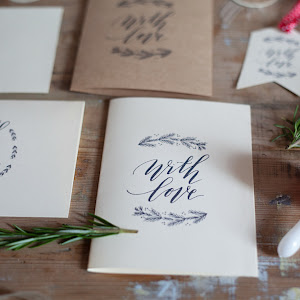Last week I did something that truly terrified me: I replied to a tweet about a new TV cooking show and I ended up being invited for an interview! I found out on the Tuesday evening and I had to visit the company's offices and bring a dish with me on the Friday, so it was a rather quick turnaround.
I'm pretty confident in my cooking - and this blog is helping me to be more adventurous and perfect my recipes along the way - but my mind went totally blank when they asked me to bring something to taste. The problem was that the emphasis was to be on presentation, as people could be bringing their dishes from quite far away and obviously even the most delicious food falls a little flat when it's been sitting in tupperware for a few hours. Presentation is not my strength, but with a little thought I came up with something I think looks pretty decent...and delicious!
I know how to make lemon drizzle cake with my eyes closed, so I decided to start simple and add a few extras and I came up with rose water cream and blackberries set in elderflower jelly. Chefs make plating up look so easy, but making a dish look 'fancy' is actually really hard. There are so many plating methods and plate shapes to choose from - you can see a couple of my attempts below.
To make the lemon cake:
3 eggs (150g)
150g self-raising flour
150g softened butter
150g caster sugar
To make the lemon drizzle:
Zest and juice of 2 lemons
50 - 100g caster sugar
The formula for a simple sponge goes: equal quantities of eggs, flour, butter and sugar. Three medium eggs should weight about 150g, but if they weigh more or less, adjust your other ingredients to match; for example, if your eggs weigh 170g, then use 170g each of self-raising flour, butter and sugar.
Pre-heat the oven to 180C. Mix together the butter and sugar until smooth, then beat the eggs and add to the mixing bowl along with the flour and the grated zest of one lemon. Beat together until you have a creamy batter (you can use an electric whisk, but by hand works just fine too...and you get a bit of a workout along the way!). Be careful not to over beat, though, or you'll knock out all the air and be left with a dense sponge. If you have a couple of lumps, they are likely to be butter and should melt when cooked anyway.
To make these little individual cakes, I used empty baked bean tins (I saw the idea here ages ago) that I thoroughly cleaned and removed the paper from the outside. You have to cut the rim off the top as there is a little lip on the inside rim. To be honest, I wouldn't recommend using tin cans for baking as they are difficult to grease and are a bit of a hazard - I cut my hand quite badly trying to grease them. To grease the tins, I cut a circle of greaseproof parchment paper to sit in the base of the tin and then buttered the inside of the tin. Then, I cut a long, thin strip of greaseproof paper which I put in the tin, leaving the ends sticking out, so that I would have something to pull the cake out of the tin with.
Fill the tins about halfway full and then bake in the oven for 10 - 20 minutes or until a skewer poked through the centre comes out clean. If you are using a loaf tin (which is what I would normally use), the cake will need around 30 - 35 minutes.
While the cake is still in the tin, mix together the juice of two lemons with the caster sugar. It really depends how sweet you want the cake; if you are serving it with something like ice cream, you might want the syrup to be a bit more tart. Poke holes in the top of the cake with a skewer, making sure to go all the way through to the bottom, and pour over the syrup. Depending on how much sugar you've used you might get a bit of a crunchy top, but don't worry if you don't...it's still delicious!
I split this post into two as it's so long; go to Part 2 for the jellied blackberry recipe.












Very nice, good plating! Looks very dainty!
ReplyDeleteThanks Rebecca x
Delete